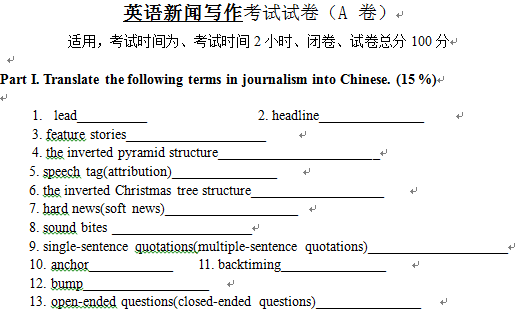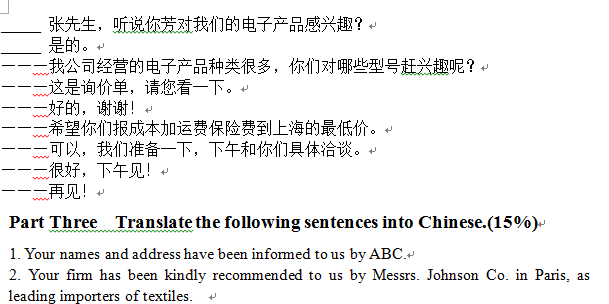materia medica 2、adrenaline 3、chloroform
4、amoxicillin 5、skeletal muscle 6、safety margin
7、GC 8、pulmonary circulation 9、extracellular fluid
10、withdrawal time
二、Fill blank with the optimal word provided(20points,1point each)
1. atrium, blood, body, cell, gastrointestinal tract, heart, kidneys, lungs, veins, ventricle
The circulatory system is the transport system that supplies O2 and substances absorbed from the (1) to the tissues,returns CO2 to the (2) and other products of metabolism to the (3) , functions in the regulation of (4) temperature,and distributes hormones and other agents that regulate (5) function. The (6) , the carrier of these substances, is pumped through a closed system of blood vessels by the (7) , which in mammals is really 2 pumps in series with each other. From the left (8) , blood is pumped through the arteries and arterioles to the capillaries,where the blood equilibrates with the interstitial fluid. The capillaries drain through venules into the (9) and back to the right (10) . This is the major (systemic) circulation.
2. absorption, action, disposition, e. g., i. e., interactions, mixtures, modification, synergize, therapy
The pharmaceutical industry provides a variety of dosage forms and dosage levels of particular drugs, thus enabling the physician to control the onset and duration of drug (11) by altering the dose and/or mode of administration. In some instances, control of drug therapy can be achieved by taking advantage of beneficial drug (12) that affect drug (13) and elimination, (14) the action of Probenecid, which inhibits the excretion of Penicillin, thus prolonging its blood level. Mixtures of drugs might be utilized to potentiate, (15) , or antagonize given drug actions. Alternately, drug (16) might be formulated in which the rate and/or extent of drug
(17) is modified. Sustained release dosage form design embodies this approach to the control of drug action, (18) ,through a process of either drug (19) or dosage form modification, the absorption process, and subsequently drug (20) , can be controlled.
三、Translate the following underlined clauses into Chinese (30points,6points each)
The set of analytical procedures developed to control the quality of the final marketed product must include both qualitative and quantitative methods in order to assure the identity and purity of the product (1). Several categories of tests are usually included in a product specification and these are summarized in Table 3.2. All the procedures called out in the specification must be amenable to routine use in a quality control laboratory and must therefore be as simple and rapid as possible. The procedures used during product development can often be simplified without loss of essential specificity or accuracy because the real problems associated with the product





































B-卷.png)

